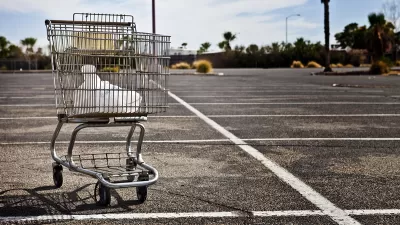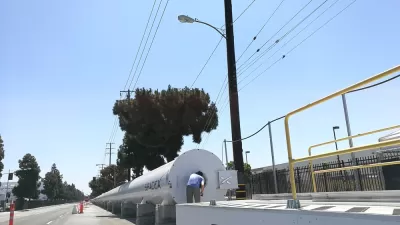Online options and oversaturation in some markets are leading to continued declines in physical storefronts around the country.

The amount of retail in some markets continues to outpace demand, leading to continued store closures around the country. Bloomberg reports that the ongoing hollowing out of the retail sector has not slowed down, leaving storefronts and malls across the country either vacant or struggling to stay afloat. This trend can be partially attributed to an oversupply of new retail space in some areas of the country that lack the population to support it.
...shuttered stores and dying malls haven't brought construction of new retail space to a halt. A collection of 55 U.S. metros will add 831 million square feet of retail space in the next five years, CoStar projects. That's about 50 percent less space than the industry added in the five years beginning in 2000, though it comes as e-commerce continues to grow.
The report notes that areas of the country that have seen population declines, including Cleveland and Chicago, are being the hardest hit by retail closures as the buying power of these areas has shrunk even as some builders keep adding new retail space.
FULL STORY: These Cities Have Too Many Stores, and They’re Still Building

Study: Maui’s Plan to Convert Vacation Rentals to Long-Term Housing Could Cause Nearly $1 Billion Economic Loss
The plan would reduce visitor accommodation by 25,% resulting in 1,900 jobs lost.

North Texas Transit Leaders Tout Benefits of TOD for Growing Region
At a summit focused on transit-oriented development, policymakers discussed how North Texas’ expanded light rail system can serve as a tool for economic growth.

Why Should We Subsidize Public Transportation?
Many public transit agencies face financial stress due to rising costs, declining fare revenue, and declining subsidies. Transit advocates must provide a strong business case for increasing public transit funding.

How to Make US Trains Faster
Changes to boarding platforms and a switch to electric trains could improve U.S. passenger rail service without the added cost of high-speed rail.

Columbia’s Revitalized ‘Loop’ Is a Hub for Local Entrepreneurs
A focus on small businesses is helping a commercial corridor in Columbia, Missouri thrive.

Invasive Insect Threatens Minnesota’s Ash Forests
The Emerald Ash Borer is a rapidly spreading invasive pest threatening Minnesota’s ash trees, and homeowners are encouraged to plant diverse replacement species, avoid moving ash firewood, and monitor for signs of infestation.
Urban Design for Planners 1: Software Tools
This six-course series explores essential urban design concepts using open source software and equips planners with the tools they need to participate fully in the urban design process.
Planning for Universal Design
Learn the tools for implementing Universal Design in planning regulations.
City of Santa Clarita
Ascent Environmental
Institute for Housing and Urban Development Studies (IHS)
City of Grandview
Harvard GSD Executive Education
Toledo-Lucas County Plan Commissions
Salt Lake City
NYU Wagner Graduate School of Public Service





























